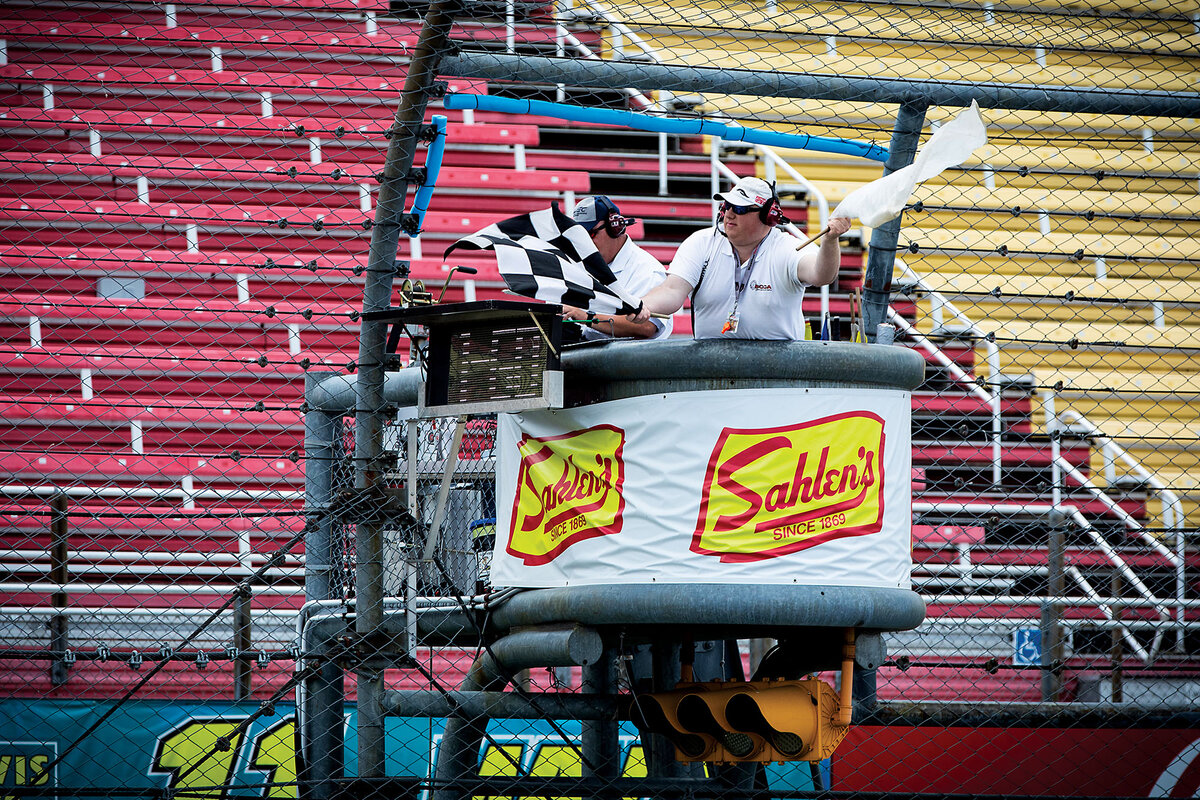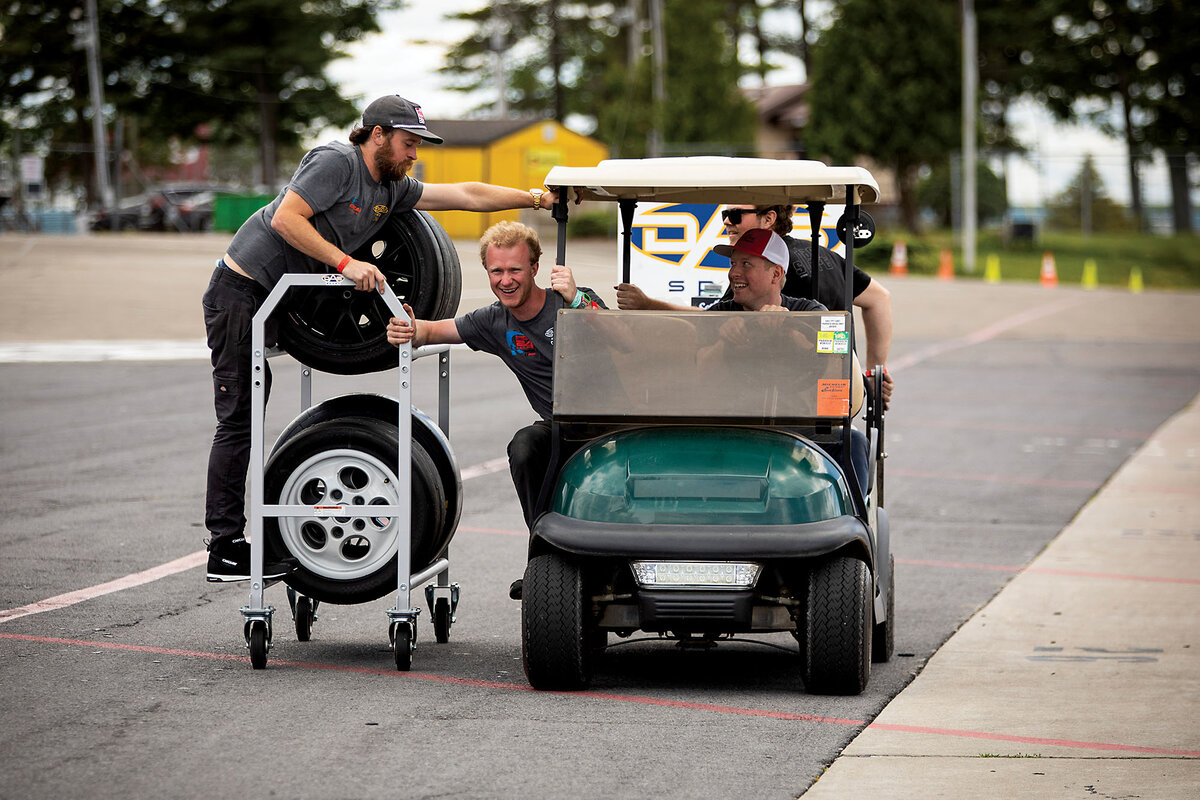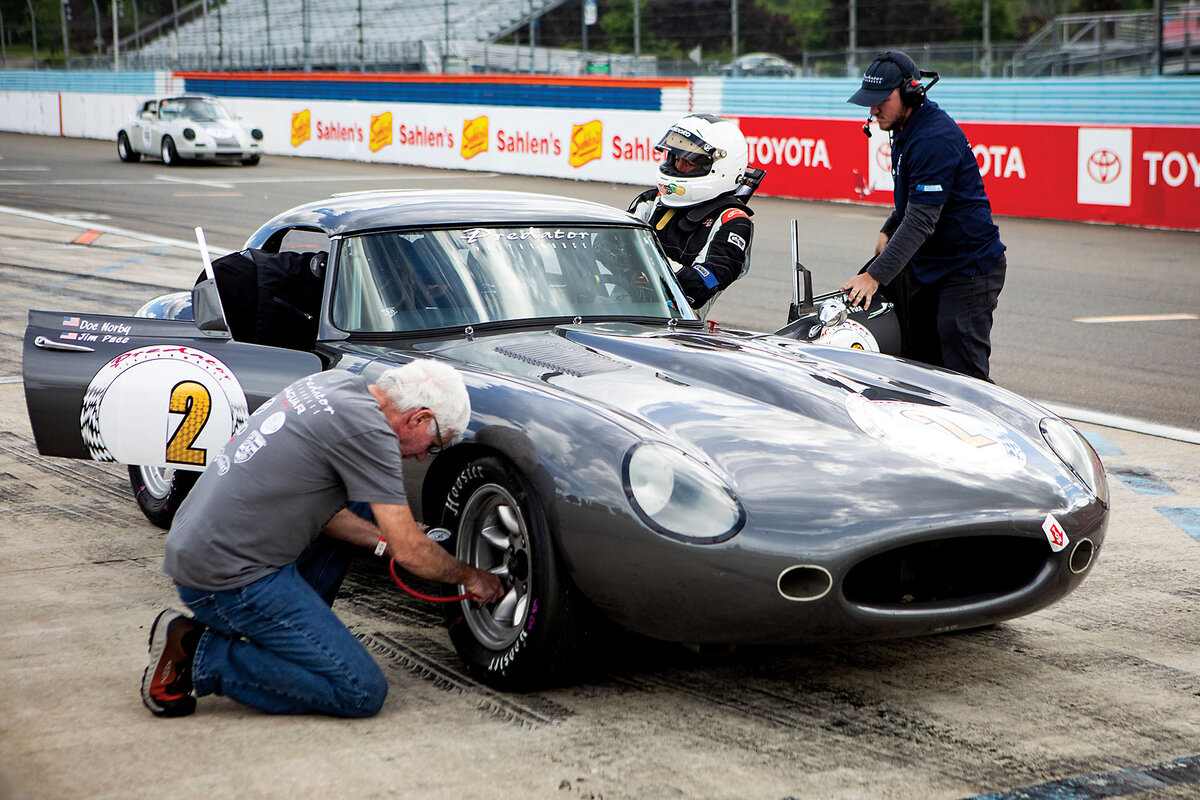Start your engines, grab some earplugs: Old cars race loud and proud
Loading...
| Watkins Glen, N.Y.
Racing old cars is a loud, and dangerous, sport.
I am walking to a spot at the Watkins Glen International track where I can take a photo when a truck comes by towing a Porsche with a smashed-in front end. The driver is sitting in his seat looking pitifully embarrassed, but at least he isn’t injured. I have permission to stand by the blue guardrail that surrounds the track – just not at certain curves that are especially prone to accidents, and not too close. No problem!
Why We Wrote This
Historic sports cars exude an allure that is second only to the thrill of watching them compete. Fans at Watkins Glen International track can’t get enough of races featuring these magnificent machines.
Racing fan John Kwasnowski is taking photos in the pit. Racing “gets in your blood,” he says. “If you love it, you can’t get enough.”
Historic Sportscar Racing staff member Frank Thompson, who lines up the cars in qualifying order before a race, notes that “We’re a traveling family. ... We spend more time with this family than with our real one.”
He has more to say. If only I could hear him above the roar of the engines.
Expand the story to see the full photo essay.
The sound comes first. I’m driving through the rolling hills of dairies and farmland in New York’s peaceful Finger Lakes area when I begin to hear something that doesn’t belong. Race cars! I had been warned to bring earplugs, but I had no idea how loud LOUD could be. The noise, like a herd of Harleys, vibrates in my body. I arrive at Watkins Glen International, a 3.45-mile track that hosts Historic Sportscar Racing (HSR) events and other races.
Although almost all of the drivers are amateurs, they are credentialed. But this is a dangerous, and very expensive, sport. I am walking to a spot where I can take a photo when a truck comes by towing a Porsche with a smashed-in front end. The driver is sitting in his seat looking pitifully embarrassed, but at least he isn’t injured. I have permission to stand by the blue guardrail that surrounds the track – just not at certain curves that are especially prone to accidents, and not too close. No problem!
Racing fan John Kwasnowski is taking photos in the pit. Racing “gets in your blood,” he says. “If you love it, you can’t get enough.”
HSR staff member Frank Thompson, who lines up the cars in qualifying order before a race, notes that “We’re a traveling family. ... We spend more time with this family than with our real one.”
He has more to say. If only I could hear him.
For more visual storytelling that captures communities, traditions, and cultures around the globe, visit The World in Pictures.














